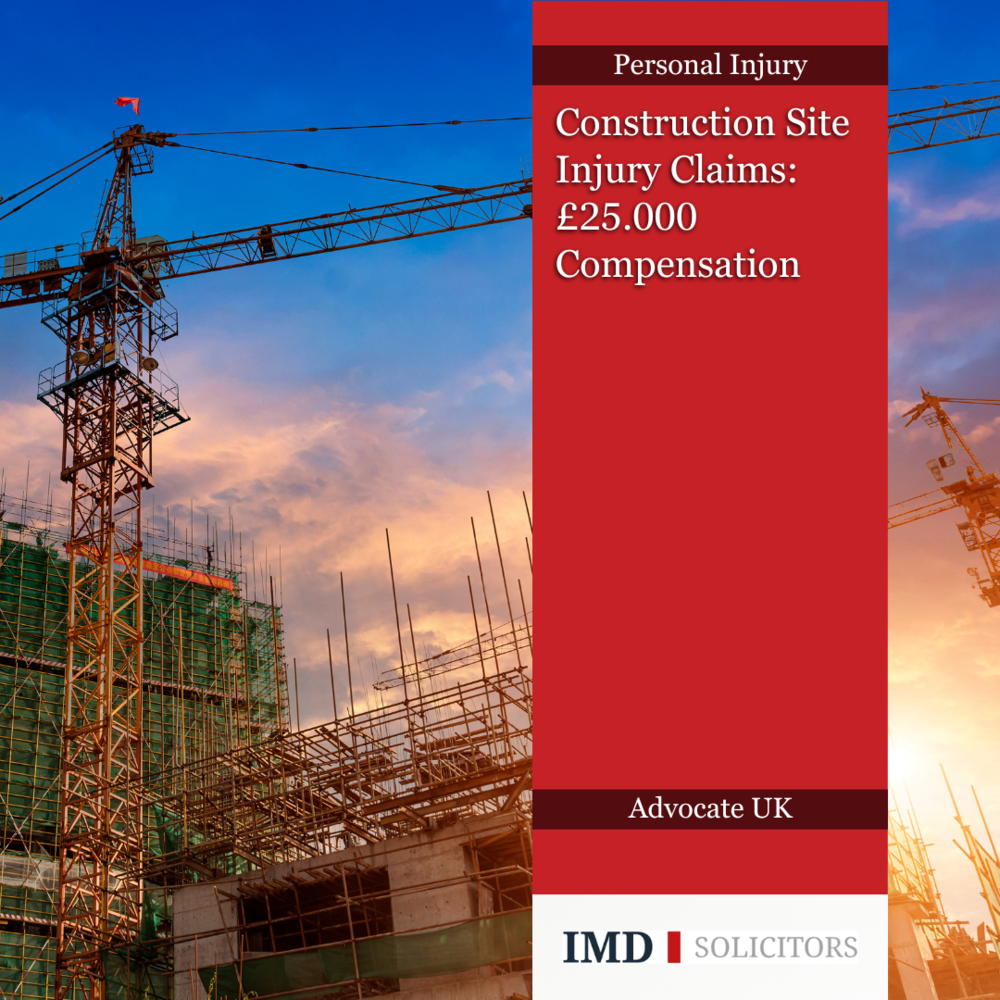
Construction site accidents present unique challenges due to the multiplicity of parties involved and the intricate responsibilities they share. This case study examines a construction site injury claim handled by IMD Solicitors LLP, demonstrating the complexities and strategic approaches required to secure compensation for our client, a self-employed labourer who suffered injuries due to a poorly secured ladder.
Our client, a self-employed labourer, was working on a construction site when the accident occurred. While descending a ladder that had been improperly secured against scaffolding, he fell sideways. The ladder wobbled, causing him to lose balance and fall, resulting in a fractured arm, elbow injury, head abrasions, and various bruises. Although his injuries were not life-threatening, they significantly impacted his ability to work and earn a living.
Following the accident, our client faced immediate financial distress due to his inability to work. As a self-employed individual, he had no access to sick pay or other employment benefits, exacerbating his financial predicament. Concerned about his future, he contacted us for legal assistance.
One of the primary challenges in construction site accident cases is identifying the responsible parties. In this case, multiple entities were potentially liable:
Our initial step involved preparing and sending letters of claim to the main contractor and the individual overseeing our client’s tasks. Both parties denied liability, suggesting that responsibility lay with other contractors involved in maintaining the scaffolding and ladders.
Given the denials of liability, a thorough investigation was essential. We collected witness statements, reviewed site documentation, and examined contracts to determine the specific duties and responsibilities of each party. This meticulous process was necessary to build a strong case demonstrating negligence.
Despite our efforts, none of the parties admitted liability, leading us to issue formal court proceedings. The defendants continued to deflect blame onto each other, necessitating judicial intervention to resolve the matter. As the case progressed, the court procedure required comprehensive preparation, including presenting evidence and legal arguments to establish the culpability of the involved parties.
As the trial date approached, the defendants’ solicitors convened and negotiated a settlement. Recognising the strength of our case and the risk of a court ruling against them, they agreed to a collective compensation payment. The compensation amount, although not exorbitant, was substantial considering the nature of the injuries. The liability was apportioned among the defendants, with each entity bearing a percentage of the total compensation.
This case highlights the inherent challenges of construction site injury claims. Multiple parties with overlapping responsibilities often complicate the process of establishing liability. Our thorough investigation and evidence collection were crucial in overcoming these challenges.
In personal injury cases, especially those involving construction sites, detailed documentation and evidence are vital. Securing witness statements, reviewing contractual obligations, and understanding site safety protocols played a pivotal role in building a compelling case.
When liable parties refuse to admit responsibility, judicial intervention becomes necessary. Issuing court proceedings can be an effective strategy to compel parties to negotiate and settle. In this case, the impending trial prompted the defendants to reach a settlement, avoiding further litigation costs and potential court-imposed penalties.
Securing compensation provided crucial financial relief for our client, enabling him to cover medical expenses and lost earnings. Additionally, the case underscored the need for continuous legal support and advocacy for self-employed individuals who lack the employment benefits available to salaried workers.
This case study underscores the expertise required to navigate the complexities of personal injury claims arising from construction site accidents. Through diligent investigation, strategic legal action, and robust client advocacy, IMD Solicitors LLP successfully secured a fair compensation for our client. This outcome not only provided financial relief but also highlighted the importance of holding multiple parties accountable in ensuring construction site safety. Our approach reflects a commitment to achieving justice and upholding the rights of injury victims in challenging legal landscapes.
This article is for general information only and does not constitute legal or professional advice. Please note that the law may have changed since this article was published.